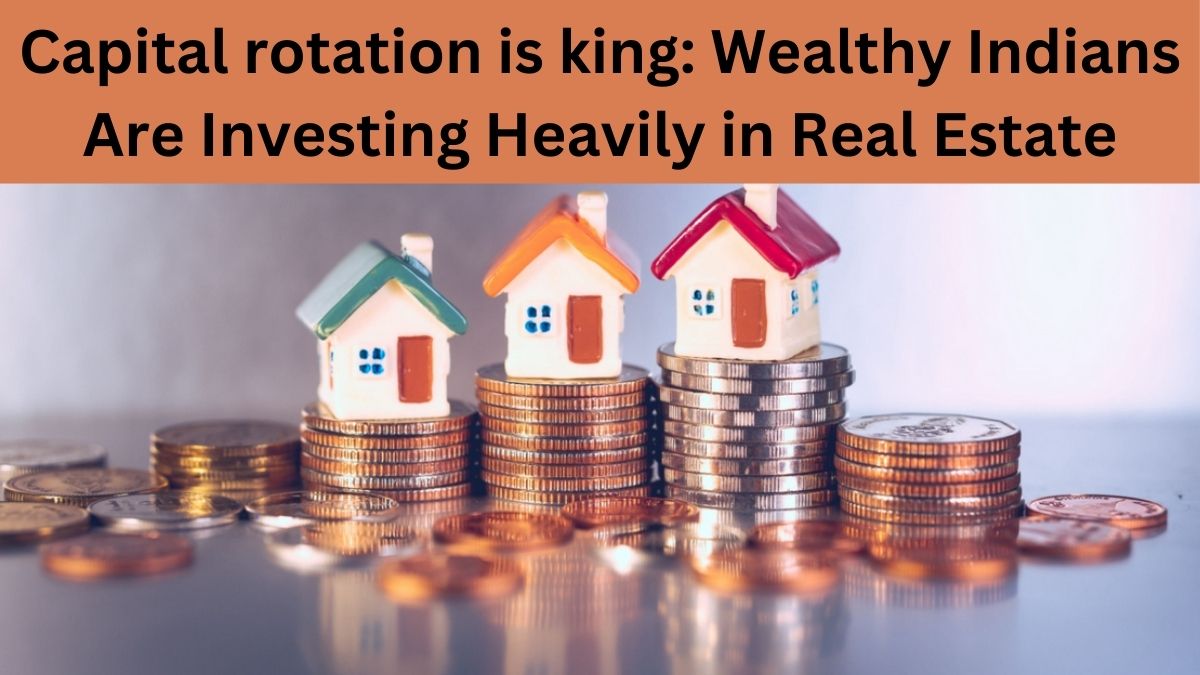Capital rotation is a key strategy among high-net-worth individuals (HNWIs) in India who seek to maximize returns by shifting funds between asset classes. According to financial influencer Akshat Shrivastava, affluent investors are actively balancing stocks and real estate to optimize wealth generation.
This strategy enables them to capitalize on market cycles—investing in stocks when they are undervalued and reallocating profits into real estate when stock valuations peak. The fundamental principle behind this method is to leverage market inefficiencies for superior returns while maintaining a diversified portfolio.

The Role of Stocks in Wealth Accumulation
Growth and Liquidity Advantages
Stocks serve as a primary vehicle for wealth creation due to their liquidity and potential for exponential growth. They offer several advantages, including:
- Capital Appreciation: Over time, stocks have historically provided higher returns compared to other asset classes.
- Liquidity: Unlike real estate, stocks can be bought and sold instantly, providing investors with flexibility.
- Dividend Income: Many stocks offer dividends, creating an additional income stream.
For wealthy investors, stocks represent a tool for aggressive capital expansion, allowing them to reinvest gains and take advantage of new opportunities as they arise.
The Appeal of Real Estate for Wealth Preservation
Stability and Passive Income
Unlike stocks, real estate offers stability and tangible value. It is a preferred investment among the wealthy because of its:
- Consistent Cash Flow: Rental income from residential and commercial properties provides passive earnings.
- Asset Appreciation: Real estate typically appreciates over time, providing long-term gains.
- Leverage Opportunities: Investors can secure loans against real estate to raise capital for other ventures.
This stability makes real estate an attractive hedge against market volatility, offering a counterbalance to the unpredictability of stock investments.
How Wealthy Investors Use Capital Rotation for Maximum Returns
The Strategic Cycle of Buying and Selling
Shrivastava highlights that wealthy investors continuously rotate capital between stocks and real estate based on market conditions:
- During Economic Downturns: Investors leverage their real estate holdings to raise cash and invest in undervalued stocks.
- When Stock Prices Surge: They liquidate stocks at a premium and reinvest the profits into real estate.
- Asset Optimization: By shifting between these asset classes, they ensure continuous capital appreciation and diversification.
This strategy has been widely adopted by global billionaires, including Amazon’s Jeff Bezos, who has strategically sold Amazon stock to invest in real estate.
The Challenges of This Investment Strategy
Barriers for Retail Investors
While capital rotation is effective, it is not a universally accessible strategy. Many retail investors face significant challenges:
- High Entry Costs: Unlike stocks, real estate requires substantial upfront capital, making it difficult for small investors to participate.
- Lower Liquidity: Selling real estate is a time-consuming process, limiting flexibility.
- Market Dependency: Real estate values fluctuate based on economic conditions, interest rates, and local demand.
A user in Shrivastava’s discussion pointed out that while capital rotation works for those with substantial cash flow, it is impractical for individuals who cannot afford high-value real estate investments.
The Importance of Asset Allocation in Wealth Building
Diversification for Long-Term Stability
A balanced investment portfolio is crucial for sustainable wealth accumulation. Experts emphasize asset allocation as a fundamental principle, suggesting:
- A Mix of Stocks, Bonds, and Real Estate: This diversification helps mitigate risks and optimize returns.
- Buying Depressed Assets: Investing in undervalued assets across different cycles ensures above-normal returns.
- Inverse Asset Relationships: Holding uncorrelated assets, such as stocks and bonds, reduces overall portfolio volatility.
A strategic allocation of resources ensures financial security while maximizing growth potential.
Key Takeaways: Why the Wealthy Favor Capital Rotation
| Factor | Stocks | Real Estate |
|---|---|---|
| Liquidity | Highly liquid; easy to buy/sell | Low liquidity; selling takes time |
| Growth Potential | High returns over time | Steady appreciation |
| Income Generation | Dividends | Rental income |
| Stability | Volatile | More stable |
| Leverage | Limited loan options | Strong borrowing power |
Capital rotation between stocks and real estate is a proven strategy among the wealthy. By leveraging both assets effectively, investors can achieve a well-rounded and resilient portfolio.
Frequently Asked Questions
1. Why do wealthy individuals invest heavily in real estate?
Real estate provides long-term stability, passive income, and strong borrowing potential, making it a valuable asset for wealth preservation and capital growth.
2. Can retail investors use the capital rotation strategy?
While challenging due to high entry costs in real estate, retail investors can apply capital rotation on a smaller scale by diversifying across stocks, REITs, and bonds.
3. How does capital rotation differ from traditional investing?
Capital rotation actively shifts funds between asset classes based on market conditions, whereas traditional investing focuses on long-term holding.
4. Is real estate better than stocks?
Neither is inherently better; stocks offer liquidity and high growth, while real estate provides stability and passive income. A combination of both is ideal.
5. How can beginners start investing in real estate with limited funds?
Beginners can explore options like Real Estate Investment Trusts (REITs), fractional ownership platforms, or small rental properties to gain exposure without large capital requirements.
Click here to know more.
Kishan is a knowledgeable writer specializing in agriculture and the latest government job recruitments, delivering clear and insightful content to inform and empower readers.
